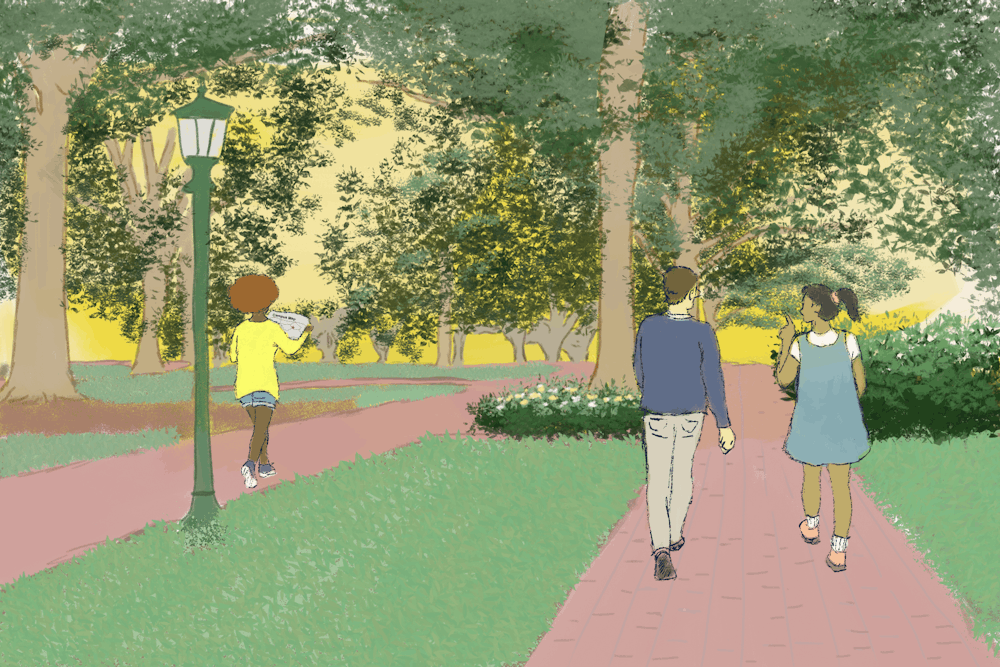USC’s central quad, the beloved Horseshoe, is one of the country’s most historically rich university spaces, a place where the past is literally underfoot. Every day, thousands of students, visitors and prospective students walk beneath its canopy of oaks, admiring the brick paths and antebellum facades with hardly any context for what they see. This is a missed opportunity for learning, for pride and for an honest reflection of our great university. The University of South Carolina should launch a self-guided history tour that makes the Horseshoe’s story accessible to anyone with a phone and a few minutes to explore.
Founded in 1801 to help unify South Carolinians in the young republic’s turbulent early years, USC has witnessed events that mirror the nation’s struggles and reinventions. During Gen. William Sherman’s March in 1865, Columbia was burned, and much of the city perished, but the Horseshoe survived. As a result, some of Columbia’s oldest buildings stand here, including Rutledge Chapel, completed in 1805, which remains a cornerstone not just for the university but for the city.
In the Reconstruction era, USC briefly embodied a bold, inclusive vision. The university reopened in 1866 with plans for a diverse campus, seated its first African-American trustees in 1868 and enrolled African-American students by 1873, making it the only state university in the South to grant degrees to African-American students during Reconstruction. That chapter ended with resegregation in 1880, but the record still remains.
Currently, these stories are scattered across archives and class lectures when they should be at our fingertips. Other universities have already shown how to do this well. The University of North Carolina at Chapel Hill offers walking tours that interpret its founding and civil rights history, while the University of Virginia provides QR code stops that layer context onto landmarks in real time. These models create a framework for engaging with complicated legacies, honoring progress and acknowledging harm — all while making the self-touring process more engaging.
A USC version could be straightforward and powerful; just imagine a “Horseshoe History Trail” mapped in thematic routes, each designed to take 20 to 30 minutes. Discrete plaques at key sites, such as outside the Visitor Center, Rutledge College, the South Caroliniana Library, historic dorms and lesser-known corners of the Horseshoe, would anchor the tour.
Each marker would carry a short caption and a QR code that opens a mobile page with photos, short videos and a “Why this matters” section. For navigation, the university could use an existing platform such as Guidebook to overlay a simple map and let visitors choose a route.
A small editorial board, drawn from the Department of History, University Libraries, the Department of African American Studies, the Office of Access and Opportunity and student groups, could establish standards for accuracy and tone. The aim is not an outright criticism; it’s context. For the 1865 fire, for example, a stop might pair a period map with eyewitness accounts and a prompt comparing Columbia’s destruction with the Horseshoe’s survival.
For Reconstruction, a marker could show the names and stories of the Black trustees and graduates, connecting their achievements to ongoing conversations about representation on campus. For the 20th century, stops might trace desegregation, student activism and the evolution of academic programs, acknowledging setbacks and celebrating milestones.

The technology doesn't need to be elaborate. A simple, lightweight site optimized for mobile devices, a handful of short clips produced by the university’s communications team, and a centralized content management process would cover most needs. QR codes are inexpensive, and plaques are durable. The cost is modest compared to the enrichment of the campus for all who venture to the Horseshoe.
A project like this can't be done by a single person or department; it must be done collaboratively. Faculty could assign route-based reflections while alumni could contribute photos and oral histories for optional deeper dives.
Seasonal themes could rotate through the app, encouraging repeat visits and keeping the material fresh. With modest marketing, the tour could become a signature feature of orientation, homecoming and admissions events.
Most importantly, a self-guided tour signals that USC takes its history seriously: not as decor, but as a living resource. It shows that the university can hold nuance, the survival alongside losses, aspiration alongside failure and progress alongside backlash.
USC’s Horseshoe is not simply a picturesque backdrop. It is a testament to the university’s place in American history.
From enduring the flames of 1865 to thriving in the 21st century, the university has stood the test of time. That legacy deserves to be rediscovered where it was made. With clear curation, a handful of plaques and a set of well-designed QR codes, USC can transform its campus into a living museum.
If you are interested in commenting on this article, please send a letter to the editor at sagcked@mailbox.sc.edu.

